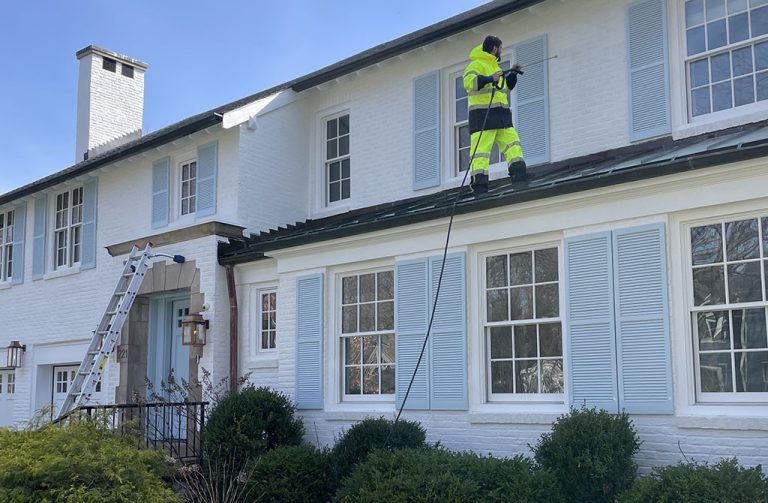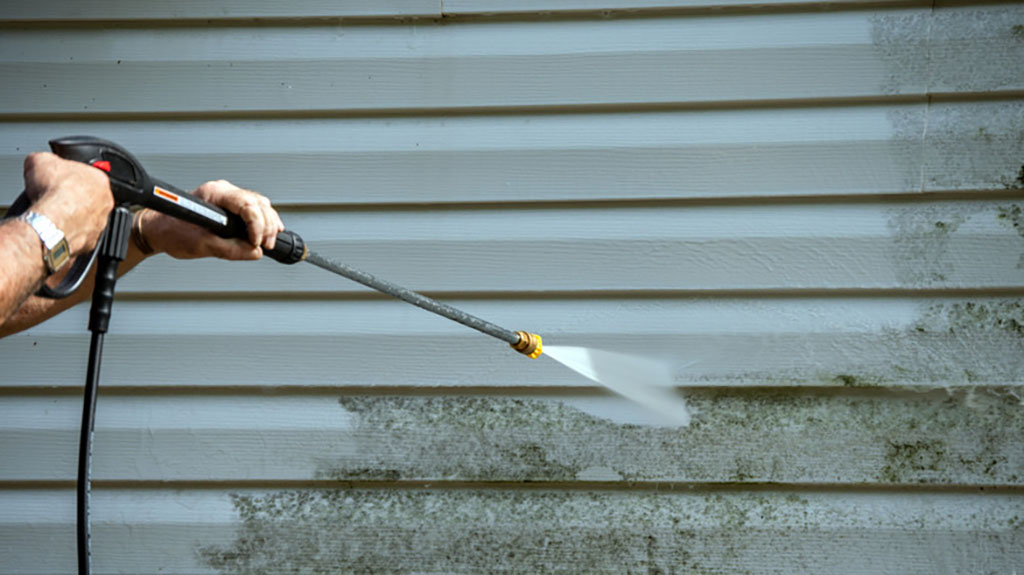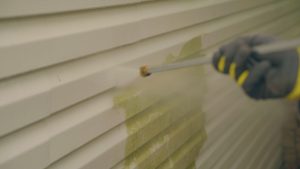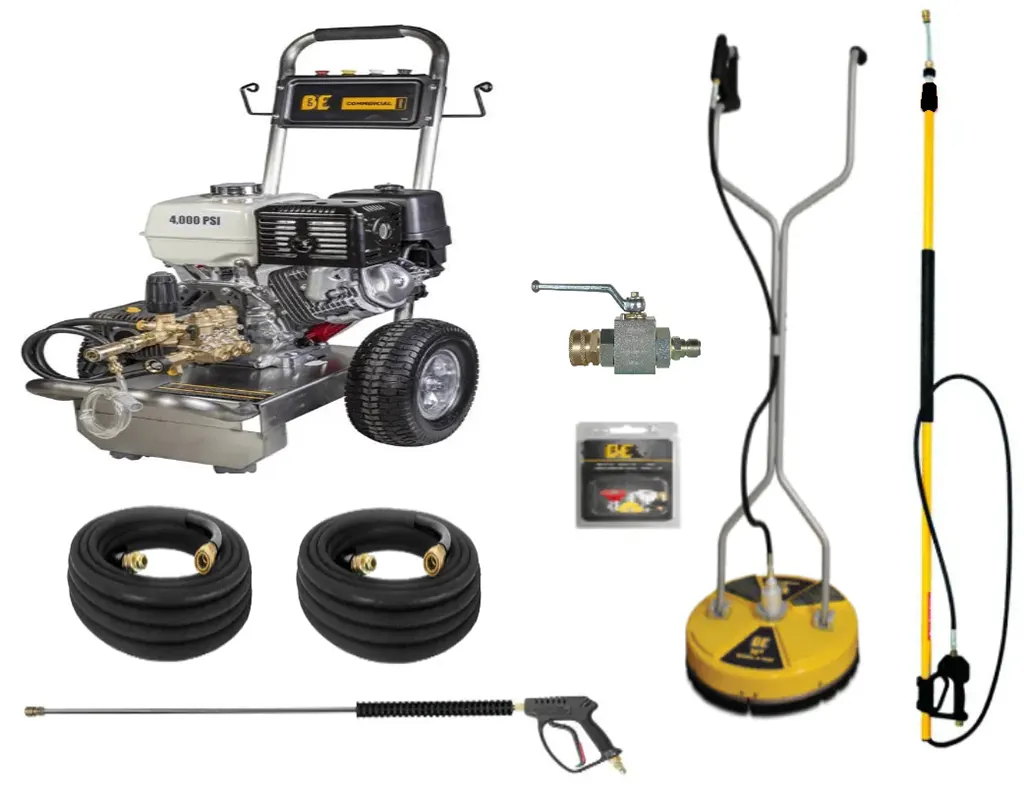
Top Tips for Effective House Washing: Safeguarding Your Home’s Exterior
Facing a grimy home exterior and not sure how to tackle it? House washing is the solution, but it requires the right approach to avoid damage and ensure cleanliness. This article zeroes in on tailored washing strategies for various exteriors, must-have tools, and essential prep work. Ready to restore your home’s beauty safely and effectively? Let’s dive into practical steps to help you decide whether to DIY or enlist professional services.
Key Takeaways
- Regular house washing is crucial for maintaining the structural integrity of a home, averting damage, and contributing to a healthier living environment, as well as enhancing the home’s curb appeal.
- The appropriate house washing method—pressure washing for durable materials; soft washing for more delicate surfaces; and hand washing for the most sensitive areas—depends on the siding material and the dirtiness of the home’s exterior.
- Properly preparing for house washing with the right equipment, safeguarding certain areas of the home, and following a systematic approach to applying detergents and washing can lead to effective cleaning results and prevent potential damage.
Understanding the Importance of House Washing

House washing is about much more than aesthetics. Regular cleaning can help maintain your home’s structural integrity, preventing early signs of damage like corroded surfaces and damaged coatings. Moreover, it can also deter the accumulation of bacteria, contributing to a healthier living environment.
Beyond health benefits, house washing significantly enhances your home’s curb appeal. Trimming overgrown trees and bushes, paired with regular washing, prevents exterior damage and keeps your home looking its best.
Choosing the Right Method for Your Home’s Exterior

When it comes to cleaning your home’s exterior, there isn’t a one-size-fits-all solution. The appropriate method for cleaning will vary depending on the type of siding material you have and the level of dirtiness it has accumulated. These factors should be considered before deciding on the most suitable cleaning approach. This blog post will delve into three primary methods: pressure washing, soft washing, and hand washing, each tailored for different situations.
Pressure Washing
Pressure washing, also known as pressure wash, is a powerful method ideal for cleaning rugged materials like brick, stone, and steel. It can also make short work of removing old paint from surfaces that have been pressure washed. Proper pressure and nozzle selection is vital when using a pressure washer to prevent damage to your home’s exterior.
However, power washing is not universally suitable. While it can reach hard-to-clean areas and remove stubborn mildew, it can also damage materials like wood, brick, and vinyl if used improperly. Knowledge of the material being cleaned is necessary before initiating pressure washing.
Soft Washing

For more delicate surfaces, soft washing is a great alternative to power wash. This method uses a low-pressure cleaning method combined with gentle cleaning agents to protect and clean delicate surfaces, including wood, stucco, vinyl siding, and fiber cement siding.
Soft washing can extend the lifespan of your vertical surfaces by preventing damage from high-pressure methods. This method serves as an efficient cleaning option for various exterior materials, promoting their prolonged good condition.
Hand Washing
For the most delicate surfaces, hand washing is the go-to method. It involves using a mild soap solution and a soft-bristled brush to gently clean your home’s exterior without causing damage.
Working in small sections is the secret to effective hand washing, as this ensures each area is thoroughly cleaned before advancing to the next. This method might take longer, but it can deliver excellent results without risking damage to your home.
Essential Tools and Equipment for House Washing

Possessing the appropriate tools, such as pressure washers, is of utmost importance when you need to pressure wash a house. Choosing the right pressure washer, also known as a power washer, is the star of the show, and it’s important to select a model with the right PSI (pounds per square inch) and GPM (gallons per minute) ratings for your cleaning tasks. To ensure the best results, follow these pressure washing tips.
In addition to the pressure washer, you’ll also need:
- A high-pressure garden hose
- Specialized nozzles for different surfaces
- An X-jet for applying cleaning chemicals
- A pressure washer gun assembly
- For high areas, a 6 to 12-ft. extension wand can be a game-changer.
Preparing Your Home for Washing
Area preparation is a necessary step prior to initiating the washing process. Here are some things you should do:
- Cover any holes or openings
- Protect areas like windows and vents that could be damaged by pressure washing
- Ensure that all outdoor electrical outlets are turned off and covered with plastic sheeting to prevent electrical hazards during the wash.
Clear the area around your home by removing any movable obstacles and trimming back any vegetation that might restrict access to your home’s siding. Lastly, close and lock all windows and doors to protect the interior of your home from water intrusion during the pressure washing process.
Step-by-Step Guide to House Washing

With a grasp of the methods and your home ready, we’ll proceed through the step-by-step process of house washing. From preparing the cleaning solution to washing the surface, this guide will ensure you have all the knowledge you need to get the job done right.
Applying Detergent
Firstly, you’ll need to prepare your cleaning solution for exterior house cleaning. You can use a commercial exterior house washing solution, or create your own by adding dish soap and vinegar to warm water. The detergent should be applied from the bottom upwards, ensuring even coverage.
If you’re cleaning high areas with a scrub brush and detergent solution, follow these steps:
- Start from the lower areas and work upward.
- Rinse frequently to avoid staining.
- Remember to keep the siding below the area you’re cleaning damp to prevent visible drip marks.
Washing the Surface
Once the detergent is applied, initiate the rinsing process. Use the right pressure and pressure tip, starting from the top and working downward to avoid streaks. Be careful not to hold the nozzle too close to the surface to prevent damage. Knowing how to pressure wash correctly is essential for achieving the best results.
Delicate areas and windows should be consciously avoided. The objective is to remove the dirt and detergent without causing any damage. Once the washing is complete, remove any protective coverings and allow the exterior to dry thoroughly.
Also read: The Best Way to Keep Your Property Looking Brand New
Maintaining Your Home’s Exterior Between Washings
House washing isn’t a one-and-done deal. Regular maintenance is crucial to maintaining your home’s exterior in optimal condition. This includes regular gutter cleaning to prevent leaks in the roof and flooding around the foundation, which can lead to severe structural issues.
Remember to include your roof in your maintenance routine as well. Removing algae, mold, and fungi from the roof is crucial to keep the shingles and eaves strong, thereby preserving the overall condition of your home’s exterior.
DIY vs. Hiring a Professional House Washing Service

Finally, we’ll weigh the pros and cons of DIY house washing against hiring a professional service. On one hand, doing it yourself can be more affordable and provides the flexibility of working according to your own schedule.
On the other hand, professional house washing services often yield better quality results due to access to commercial-grade equipment and specialized cleaning products. Additionally, the long-term savings from avoiding home repairs due to damage can make hiring professional house washing services financially sensible despite a higher initial cost.
Summary
In conclusion, regular house washing plays a crucial role in maintaining your home’s curb appeal, structural integrity, and overall healthiness. Whether you opt for pressure washing, soft washing, or hand washing, the right tools and methods can make a significant difference. Remember to prepare your home appropriately and practice regular maintenance to keep your home in top shape. Regardless of whether you decide to DIY or hire a professional, the important thing is to keep your home’s exterior clean and well-maintained.
Frequently Asked Questions
How often should I wash my house?
You should wash your house annually to every few years, depending on environmental and weather conditions that lead to dirt and grime buildup.
What type of house washing method is best for delicate surfaces?
Soft washing or hand washing is the best method for delicate surfaces as they are gentler and can prevent damage.
What tools do I need for house washing?
You will need a pressure washer, high-pressure water hose, specialized nozzles, X-jet for cleaning chemicals, pressure washer gun assembly, and an extension wand for high areas when washing your house. These are essential tools for effective house washing.
How should I prepare my home for washing?
To prepare your home for washing, cover holes, protect windows and vents, secure outdoor electrical outlets, clear movable obstacles, trim back vegetation, and ensure all windows and doors are closed and locked.
Is it better to do DIY house washing or hire a professional service?
Hiring a professional service is generally better due to the higher quality results and long-term cost effectiveness, despite being more expensive initially. It’s a worthwhile investment for your home.

